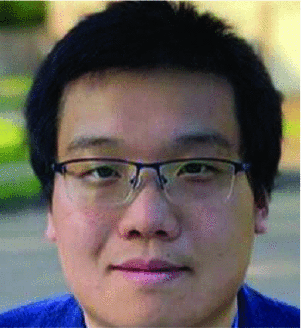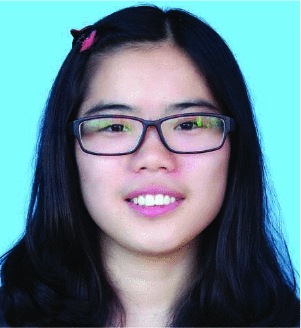Abstract:
Accurate vehicle trajectory prediction can benefit a variety of intelligent transportation system applications ranging from traffic simulations to driver assistance. The ...Show MoreMetadata
Abstract:
Accurate vehicle trajectory prediction can benefit a variety of intelligent transportation system applications ranging from traffic simulations to driver assistance. The need for this ability is pronounced with the emergence of autonomous vehicles as they require the prediction of nearby vehicles’ trajectories to navigate safely and efficiently. Recent studies based on deep learning have greatly improved prediction accuracy. However, one prominent issue of these models is the lack of model explainability. We alleviate this issue by proposing spatiotemporal attention long short-term memory (STA-LSTM), an LSTM model with spatial-temporal attention mechanisms for explainability in vehicle trajectory prediction. STA-LSTM not only achieves comparable prediction performance against other state-of-the-art models but, more importantly, explains the influence of historical trajectories and neighboring vehicles on the target vehicle. We provide in-depth analyses of the learned spatial–temporal attention weights in various highway scenarios based on different vehicle and environment factors, including target vehicle class, target vehicle location, and traffic density. A demonstration illustrating that STA-LSTM can capture and explain fine-grained lane-changing behaviors is also provided. The data and implementation of STA-LSTM can be found at https://github.com/leilin-research/VTP.
Published in: IEEE Intelligent Transportation Systems Magazine ( Volume: 14, Issue: 2, March-April 2022)

Goergen Institute for Data Science, University of Rochester Rochester, New York, USA
Lei Lin (lei.lin@rochester.edu) earned his Ph.D. degree in transportation systems engineering from the University at Buffalo, the State University of New York, Buffalo, in 2015. He is a research scientist at Goergen Institute for Data Science, University of Rochester, Rochester, New York, 14627, USA. His research interests include transportation big data, artificial intelligence applications in transportation, and connect...Show More
Lei Lin (lei.lin@rochester.edu) earned his Ph.D. degree in transportation systems engineering from the University at Buffalo, the State University of New York, Buffalo, in 2015. He is a research scientist at Goergen Institute for Data Science, University of Rochester, Rochester, New York, 14627, USA. His research interests include transportation big data, artificial intelligence applications in transportation, and connect...View more

University of Memphis, Memphis, Tennessee, USA
Weizi Li (wli@memphis.edu) earned his Ph.D. degree in computer science from the University of North Carolina at Chapel Hill. Currently, he is an assistant professor in the Department of Computer Science at the University of Memphis, Memphis, Tennessee, 38152, USA. Prior to this position, he was a Michael Hammer Postdoctoral Fellow at the Institute for Data, Systems, and Society of the Massachusetts Institute of Technology...Show More
Weizi Li (wli@memphis.edu) earned his Ph.D. degree in computer science from the University of North Carolina at Chapel Hill. Currently, he is an assistant professor in the Department of Computer Science at the University of Memphis, Memphis, Tennessee, 38152, USA. Prior to this position, he was a Michael Hammer Postdoctoral Fellow at the Institute for Data, Systems, and Society of the Massachusetts Institute of Technology...View more

Institute of Computing Technology, Chinese Academy of Sciences Beijing, China
Huikun Bi (bihuikun@ict.ac.cn) earned her Ph.D. degree from the University of Chinese Academy of Sciences. She is an assistant professor with the Institute of Computing Technology, Chinese Academy of Sciences, Beijing, 100190, China. Her main research interests include crowd simulation, motion forecasting, and deep learning. She is a Member of IEEE.
Huikun Bi (bihuikun@ict.ac.cn) earned her Ph.D. degree from the University of Chinese Academy of Sciences. She is an assistant professor with the Institute of Computing Technology, Chinese Academy of Sciences, Beijing, 100190, China. Her main research interests include crowd simulation, motion forecasting, and deep learning. She is a Member of IEEE.View more

University of Wisconsin–Madison, Madison, Wisconsin, USA
Lingqiao Qin (Lingqiao.qin@wisc.edu) earned her M.S. degree in transportation safety engineering from George Washington University, Washington, D.C. and her M.S. degree in industrial and systems engineering from University of Wisconsin–Madison. She is currently working toward her Ph.D. degree in transportation engineering at the University of Wisconsin–Madison, Madison, Wisconsin, 53704, USA. Her research interests includ...Show More
Lingqiao Qin (Lingqiao.qin@wisc.edu) earned her M.S. degree in transportation safety engineering from George Washington University, Washington, D.C. and her M.S. degree in industrial and systems engineering from University of Wisconsin–Madison. She is currently working toward her Ph.D. degree in transportation engineering at the University of Wisconsin–Madison, Madison, Wisconsin, 53704, USA. Her research interests includ...View more

Goergen Institute for Data Science, University of Rochester Rochester, New York, USA
Lei Lin (lei.lin@rochester.edu) earned his Ph.D. degree in transportation systems engineering from the University at Buffalo, the State University of New York, Buffalo, in 2015. He is a research scientist at Goergen Institute for Data Science, University of Rochester, Rochester, New York, 14627, USA. His research interests include transportation big data, artificial intelligence applications in transportation, and connected and automated transportation. He is a Member of IEEE.
Lei Lin (lei.lin@rochester.edu) earned his Ph.D. degree in transportation systems engineering from the University at Buffalo, the State University of New York, Buffalo, in 2015. He is a research scientist at Goergen Institute for Data Science, University of Rochester, Rochester, New York, 14627, USA. His research interests include transportation big data, artificial intelligence applications in transportation, and connected and automated transportation. He is a Member of IEEE.View more

University of Memphis, Memphis, Tennessee, USA
Weizi Li (wli@memphis.edu) earned his Ph.D. degree in computer science from the University of North Carolina at Chapel Hill. Currently, he is an assistant professor in the Department of Computer Science at the University of Memphis, Memphis, Tennessee, 38152, USA. Prior to this position, he was a Michael Hammer Postdoctoral Fellow at the Institute for Data, Systems, and Society of the Massachusetts Institute of Technology. His current research interests include intelligent transportation systems, multiagent simulation, virtual environments, machine learning, and robotics.
Weizi Li (wli@memphis.edu) earned his Ph.D. degree in computer science from the University of North Carolina at Chapel Hill. Currently, he is an assistant professor in the Department of Computer Science at the University of Memphis, Memphis, Tennessee, 38152, USA. Prior to this position, he was a Michael Hammer Postdoctoral Fellow at the Institute for Data, Systems, and Society of the Massachusetts Institute of Technology. His current research interests include intelligent transportation systems, multiagent simulation, virtual environments, machine learning, and robotics.View more

Institute of Computing Technology, Chinese Academy of Sciences Beijing, China
Huikun Bi (bihuikun@ict.ac.cn) earned her Ph.D. degree from the University of Chinese Academy of Sciences. She is an assistant professor with the Institute of Computing Technology, Chinese Academy of Sciences, Beijing, 100190, China. Her main research interests include crowd simulation, motion forecasting, and deep learning. She is a Member of IEEE.
Huikun Bi (bihuikun@ict.ac.cn) earned her Ph.D. degree from the University of Chinese Academy of Sciences. She is an assistant professor with the Institute of Computing Technology, Chinese Academy of Sciences, Beijing, 100190, China. Her main research interests include crowd simulation, motion forecasting, and deep learning. She is a Member of IEEE.View more

University of Wisconsin–Madison, Madison, Wisconsin, USA
Lingqiao Qin (Lingqiao.qin@wisc.edu) earned her M.S. degree in transportation safety engineering from George Washington University, Washington, D.C. and her M.S. degree in industrial and systems engineering from University of Wisconsin–Madison. She is currently working toward her Ph.D. degree in transportation engineering at the University of Wisconsin–Madison, Madison, Wisconsin, 53704, USA. Her research interests include traffic operations, the next generation of transportation (autonomous and connected vehicles), and using advanced technologies such as driving simulators and eye trackers to improve the design, operations, and safety of all elements in transportation. She is a Member of IEEE.
Lingqiao Qin (Lingqiao.qin@wisc.edu) earned her M.S. degree in transportation safety engineering from George Washington University, Washington, D.C. and her M.S. degree in industrial and systems engineering from University of Wisconsin–Madison. She is currently working toward her Ph.D. degree in transportation engineering at the University of Wisconsin–Madison, Madison, Wisconsin, 53704, USA. Her research interests include traffic operations, the next generation of transportation (autonomous and connected vehicles), and using advanced technologies such as driving simulators and eye trackers to improve the design, operations, and safety of all elements in transportation. She is a Member of IEEE.View more


